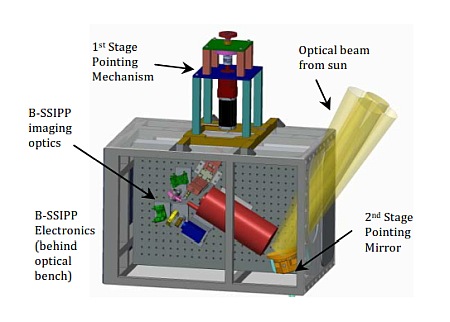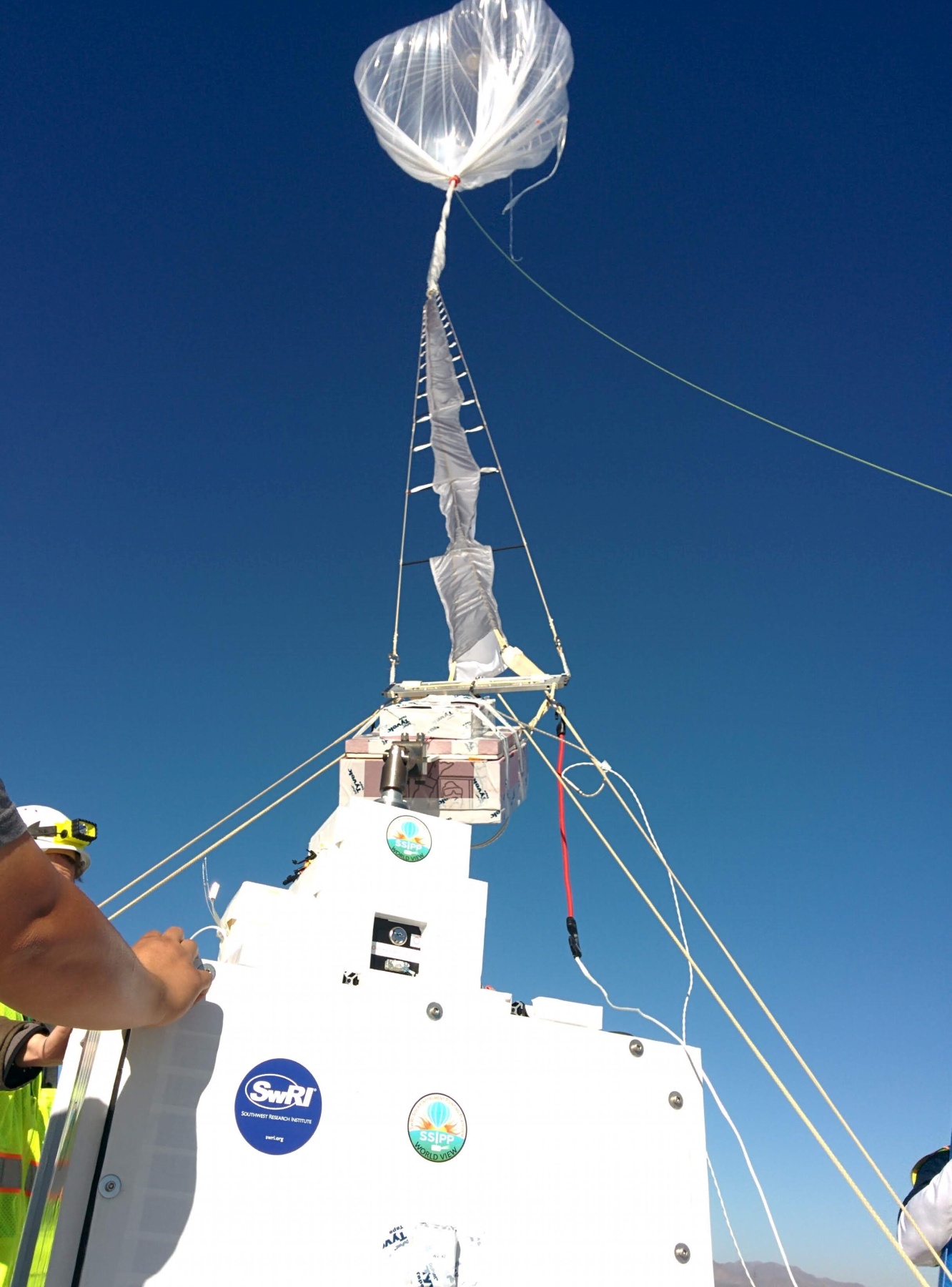Purpose of the flight and payload description
The TYCHO STRATOCRAFT is a specially built modular platform developed by World View capable of being customized for a wide variety of unique mission needs and payloads including its own subsystems for telemetry, payload control, power and thermal control. It is named after the Danish astronomer Tycho Brahe (1546-1601). As Brahe was the source of data used by others to make powerful discoveries, Tycho stratocraft is aimed to provide researchers with stratospheric access to make new discoveries.
There are three standard versions of the Tycho platforms for specific payload mass ranges: Tycho800, Tycho285 and Tycho20, where the number denotes the number of kilos that each of them can lift as payload. The systems that composed the TYCHO platform share heritage with those used by StratEx for the record setting manned balloon flights performed in October 2014.
TYCHO20 CHARACTERISTICS
Tycho20 is a stratocraft configuration for small, high altitude payloads that could be safely launched with minimal crew and infrastructure. It could fly payloads up to 20 kg to altitudes up to 46 km using a simple Payload Support Frame (PSF) which is used to integrate the payload, avionics, and aerodynamic descent system (ADS) into a single package. This simple and lightweight frame is made of 80/20 one inch extruded aluminum bar to which the payload is secured via a hook or by employing a T-slot system. Often times, an interface plate is provided to simplify the mechanical interfaces and ensure quick, reliable integration of the payload to the stratocraft PSF. Payloads within the 20 kg mass, but that do not fit within the Tycho20 PSF can still be flown using a Payload Release Interface (PRI). A single or combination of payloads of 20kg can be accommodated in the standard PSF with dimensions not exceeding a length of 75cm, width of 75cm and height of 25cm. A total hook on volume of up to 10 cubic meters can be accommodated as standard if the payload is configured to be a direct connect configuration attached to the PRI for a total payload mass upto 45 kg.
The Tycho20 avionics is a repackaged version of that used in Tycho285 -the larger version of the platform- where only required hardware is included to keep weight to a minimum: a flight computer, a flight transponder, video cameras, ground and satellite-based data communication, GPS and flight batteries. The standard Tycho20 is capable of up to 11 hours of flight time.
The platform counts with an UART serial interface to payload provider's telemetry and command functions and can be outfitted with GoPro cameras to record flight video. Power is obtained from batteries which provide voltages of 3.3, 5, 15 or 24 VDC and up to 20 amperes. The stratocraft uses a 902-928 MHz, frequency hopping, 1 watt output power, spread spectrum modem to communicate telemetry and commands at up to 1200 bps up to a distance of 160 miles. This system is used also for information and data to and from the platform during the flight.
SCIENTIFIC EXPERIMENTS ONBOARD
On this flight TYCHO hosted a single payload the SwRI Solar Instrument Pointing Platform (SSIPP) a miniaturized solar observatory that has been developed to fit the payload space for multiple manned and unmanned suborbital craft. B-SSIPP is a small (60kg, 1 meter overall) fully autonomous version of the platform, designed to fly aboard a high-altitude stratospheric balloon.
SSIPP contains a single-stage fine pointing system to achieve arcsecond-level pointing for solar remote sensing instrumentation. B-SSIPP also includes a novel, lightweight coarse pointing system to point and stabilize the payload without the use of torque motors or reaction wheels.
B-SSIPP collects a 4-inch beam and images the Sun at 2" resolution at 393nm at 20-30km altitude, to demonstrate performance and measure possible high-frequency chromospheric waves.
The system is wavelength-agile and includes a versatile, 1"-grid-drilled carbon fiber optical bench for buildup of future novel instrumentation. Flexible architecture allows future flights of the SSIPP instrument to be compatible with other manned and unmanned suborbital craft, to have larger apertures, and to support customizable optics for particular scientific investigations from infrared to the vacuum ultraviolet.SSIPP contains a single-stage fine pointing system to achieve arcsecond-level pointing for solar remote sensing instrumentation. B-SSIPP also includes a novel, lightweight coarse pointing system to point and stabilize the payload without the use of torque motors or reaction wheels.
B-SSIPP collects a 4-inch beam and images the Sun at 2" resolution at 393nm at 20-30km altitude, to demonstrate performance and measure possible high-frequency chromospheric waves.
The system is wavelength-agile and includes a versatile, 1"-grid-drilled carbon fiber optical bench for buildup of future novel instrumentation. Flexible architecture allows future flights of the SSIPP instrument to be compatible with other manned and unmanned suborbital craft, to have larger apertures, and to support customizable optics for particular scientific investigations from infrared to the vacuum ultraviolet.
Details of the balloon flight

Balloon launched on: 11/1/2019 at 12:30 utc
Launch site: Spaceport Tucson, Arizona, US
Balloon launched by: World View Enterprises
Balloon manufacturer/size/composition: Zero Pressure Balloon
End of flight (L for landing time, W for last contact, otherwise termination time): 11/1/2019 at ~ 21:00 utc
Balloon flight duration (F: time at float only, otherwise total flight time in d:days / h:hours or m:minutes - ): 8 h 30 m
Landing site: NW of Truth or Consequences, New Mexico, US
External references
- B-SSIPP: 2019 High-Altitude Balloon Flight of SSIPP
- SwRI demonstrates balloon-based solar observatory SWRI press release
- World View website
16262If you consider this website interesting or useful, you can help me to keep it up and running with a small donation to cover the operational costs. Just the equivalent of the price of a cup of coffee helps a lot.



